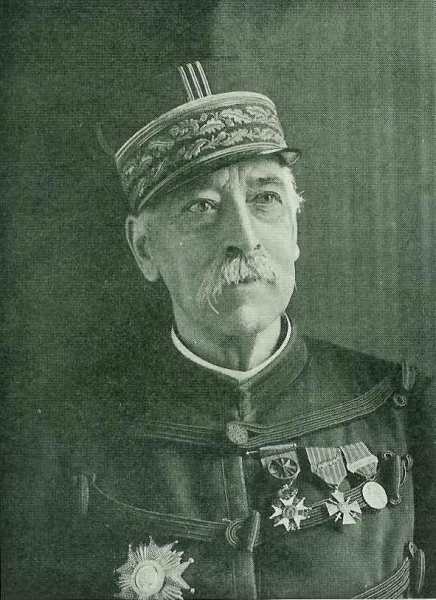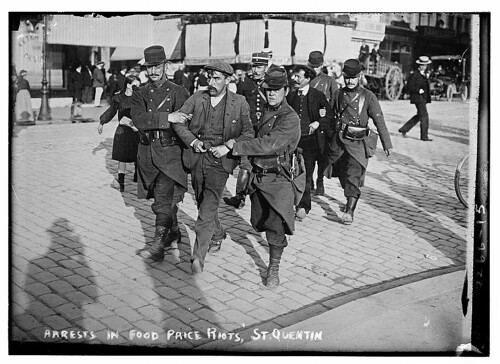the marne by bum.
The Battle of the Marne (French: 1re Bataille de la Marne) (also known as the Miracle of the Marne) was a First World War battle fought between 5 and 12 September 1914. It resulted in an Allied victory against the German Army under Chief of Staff Helmuth von Moltke the Younger. all figures are renegade
all figures are renegade
 all figures are renegade
all figures are renegade The battle effectively ended the monthlong German offensive that opened the war and had reached the outskirts of Paris. The counterattack of six French field armies and one British army along the Marne River forced the German Imperial Army to abandon its push on Paris and retreat northeast, setting the stage for four years of trench warfare on the Causes

Map of the battleThe first month of the First World War had resulted in a series of victories by German forces in France and Belgium. By the end of August 1914, the whole Allied army on the Western Front had been forced into a general retreat back towards Paris.
Meanwhile, the two main German armies that had just conquered Belgium continued to advance through France. It seemed that Paris would be taken as both the French Army and the British Expeditionary Force fell back towards the Marne River.

British troops had suffered heavy casualties during the German attack into France. Field Marshal Sir John French, commander of the British Expeditionary Force (BEF), blamed his heavy losses on French vacillation and uncoordinated French withdrawals.
In particular, he blamed French General Lanrezac, commander of the French Fifth Army, for Lanrezac’s failure to fight and unannounced pullbacks, though these had effectively saved the French Fifth Army from defeat. Lanrezac, in turn, was furious with Field Marshal French for his refusal to support the Fifth Army at Guise-St. Quentin.

In particular, he blamed French General Lanrezac, commander of the French Fifth Army, for Lanrezac’s failure to fight and unannounced pullbacks, though these had effectively saved the French Fifth Army from defeat. Lanrezac, in turn, was furious with Field Marshal French for his refusal to support the Fifth Army at Guise-St. Quentin.

Relations between the British commander and the French commanders suffered greatly. Field Marshal French made plans to move all British troops back from the front along their lines of communication for rest and reorganization. hill French Commander-In-Chief Joseph Joffre persuaded the British War Secretary, Herbert Kitchener, to intervene, and Kitchener met personally with Field Marshal French. Kitchener told Field Marshal French that a withdrawal by the British would be disastrous for both the French and British. Field Marshal French agreed to keep British troops on the front line as long as their flanks were not exposed by French withdrawals.
hill French Commander-In-Chief Joseph Joffre persuaded the British War Secretary, Herbert Kitchener, to intervene, and Kitchener met personally with Field Marshal French. Kitchener told Field Marshal French that a withdrawal by the British would be disastrous for both the French and British. Field Marshal French agreed to keep British troops on the front line as long as their flanks were not exposed by French withdrawals.
 hill French Commander-In-Chief Joseph Joffre persuaded the British War Secretary, Herbert Kitchener, to intervene, and Kitchener met personally with Field Marshal French. Kitchener told Field Marshal French that a withdrawal by the British would be disastrous for both the French and British. Field Marshal French agreed to keep British troops on the front line as long as their flanks were not exposed by French withdrawals.
hill French Commander-In-Chief Joseph Joffre persuaded the British War Secretary, Herbert Kitchener, to intervene, and Kitchener met personally with Field Marshal French. Kitchener told Field Marshal French that a withdrawal by the British would be disastrous for both the French and British. Field Marshal French agreed to keep British troops on the front line as long as their flanks were not exposed by French withdrawals.
1914.As the German First and Second Armies approached Paris, they began to swerve to the southeast away from Paris in an attempt to envelop the retreating French armies, exposing their right flank to the allies. By 3 September, Joffre had become aware of the German armies’ tactical error.
On 4 September, he made plans to halt the French and British withdrawal and attack the Germans all along the front with the French Sixth Army (150,000 men) and the aid of the British Expeditionary Force (70,000 men) under the command of Sir John French (who was prompted to join this attack by the British war minister, Lord Kitchener).
The attack was set to begin on the morning of 6 September. However, General Alexander von Kluck, the commander of the German First Army, detected the approach of the Allied forces on 5 September and, too late, began to wheel his Army to face the west.
In the morning of 5 September, battle commenced when the advancing French Sixth Army came into contact with cavalry patrols from General Hans H. K. Gronau’s IV Reserve Corps on the right flank of the German First Army near the Ourcq River. Seizing the initiative in the early afternoon, Gronau’s two divisions attacked with light artillery and infantry into the gathering Sixth Army and pushed it back into a defensive posture before the planned allied assault for the following day, but the threat to the French offensive by Kluck’s wheeled First Army in this preliminary Battle of the Ourcq (French: Bataille de l'Ourcq) ignored the allied forces advancing against his right flank, and was later reduced both by the arrival of the taxicab reinforcements from Paris and orders for Kluck to retreat to the Aisne River, delivered by Moltke’s staff officer, Oberstleutnant Richard Hentsch.
Seizing the initiative in the early afternoon, Gronau’s two divisions attacked with light artillery and infantry into the gathering Sixth Army and pushed it back into a defensive posture before the planned allied assault for the following day, but the threat to the French offensive by Kluck’s wheeled First Army in this preliminary Battle of the Ourcq (French: Bataille de l'Ourcq) ignored the allied forces advancing against his right flank, and was later reduced both by the arrival of the taxicab reinforcements from Paris and orders for Kluck to retreat to the Aisne River, delivered by Moltke’s staff officer, Oberstleutnant Richard Hentsch.
On 4 September, he made plans to halt the French and British withdrawal and attack the Germans all along the front with the French Sixth Army (150,000 men) and the aid of the British Expeditionary Force (70,000 men) under the command of Sir John French (who was prompted to join this attack by the British war minister, Lord Kitchener).

The attack was set to begin on the morning of 6 September. However, General Alexander von Kluck, the commander of the German First Army, detected the approach of the Allied forces on 5 September and, too late, began to wheel his Army to face the west.

In the morning of 5 September, battle commenced when the advancing French Sixth Army came into contact with cavalry patrols from General Hans H. K. Gronau’s IV Reserve Corps on the right flank of the German First Army near the Ourcq River.
Von Kluck, in turning to meet the potential for attack on his right flank, opened up a 30 mi (48 km)-wide gap in the German lines between his First Army and the German Second Army, commanded by the cautious General Karl von Bülow, which was located to the left of the First Army.
Allied reconnaissance planes discovered the gap and reported it to commanders on the ground.
The Allies were prompt in exploiting the break in the German lines, dispatching troops from the BEF to join the French Fifth Army pouring in.on 3 September, the seemingly hopeless Allied situation suddenly changed. The Military Governor of Paris, General Galliéni — while reviewing the results of newly-obtained aerial reconnaissance was the man who discovered that the German advance had veered east of Paris, exposing the lengthening flank of the German right wing to an Allied counterattack.
Despite initial skepticism on the part of Marshal Joffre, General Galliéni was persistent and persuasive. On 4 September, six hundred Paris taxis were commandeered by the Military Governor to help transport a fresh division across the ‘City of Light’.
These troops were desperately needed to reinforce General Maunoury’s Sixth Army as it began a major counterattack against the exposed German flank. By 6 September, General von Kluck’s First German Army had been forced to fall back in the face of the increasing French pressure; this, in turn, had opened up a thirty mile gap in the German front. Surprised by the unexpected Allied counteroffensive, and increasingly worried about false rumors of Allied amphibious landings along the Belgian Coast to their rear, the German High Command ordered General von Bülow’s Second Army to fall back and reestablish contact with von Kluck’s First Army. The German drive had been turned back.
Allied reconnaissance planes discovered the gap and reported it to commanders on the ground.
The Allies were prompt in exploiting the break in the German lines, dispatching troops from the BEF to join the French Fifth Army pouring in.on 3 September, the seemingly hopeless Allied situation suddenly changed. The Military Governor of Paris, General Galliéni — while reviewing the results of newly-obtained aerial reconnaissance was the man who discovered that the German advance had veered east of Paris, exposing the lengthening flank of the German right wing to an Allied counterattack.
Despite initial skepticism on the part of Marshal Joffre, General Galliéni was persistent and persuasive. On 4 September, six hundred Paris taxis were commandeered by the Military Governor to help transport a fresh division across the ‘City of Light’.
These troops were desperately needed to reinforce General Maunoury’s Sixth Army as it began a major counterattack against the exposed German flank. By 6 September, General von Kluck’s First German Army had been forced to fall back in the face of the increasing French pressure; this, in turn, had opened up a thirty mile gap in the German front. Surprised by the unexpected Allied counteroffensive, and increasingly worried about false rumors of Allied amphibious landings along the Belgian Coast to their rear, the German High Command ordered General von Bülow’s Second Army to fall back and reestablish contact with von Kluck’s First Army. The German drive had been turned back.

No comments:
Post a Comment